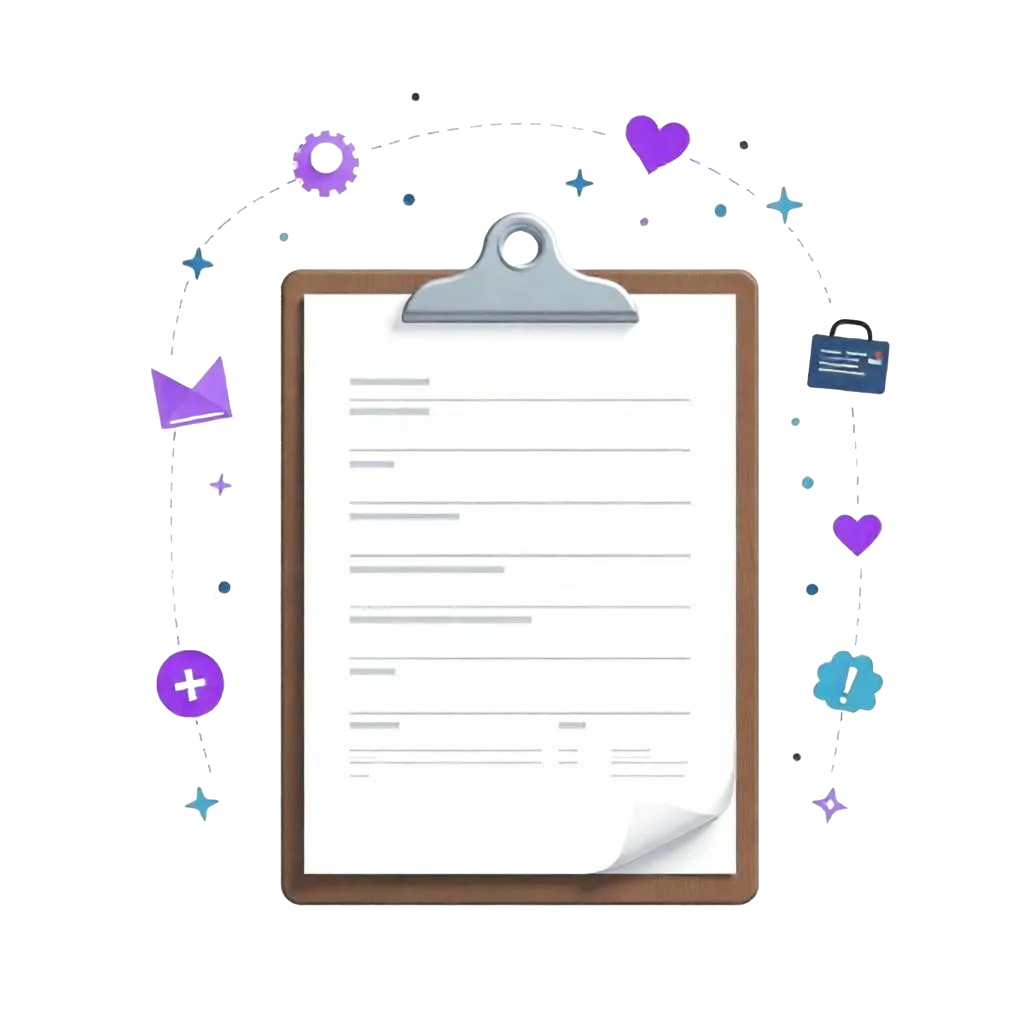Summary: Navigating the prior authorization process is essential for healthcare professionals to ensure treatments are covered by insurance. This guide provides a step-by-step approach to using prior authorization code lookup tools effectively, emphasizing the importance of understanding specific payer requirements and utilizing digital resources. For the best results in managing prior authorizations, consider using SPRY, which streamlines the process and enhances efficiency in patient care.
Navigating the healthcare system can be complex. For healthcare professionals, one of the most challenging aspects is managing prior authorizations.
Prior authorization is a process used by insurance companies. It requires healthcare providers to obtain approval before performing certain procedures or services.
This process involves the use of specific codes. These codes, known as prior authorization codes, are crucial for the billing process. They help ensure that the requested service is covered by the patient's insurance plan.
However, finding and understanding these codes can be a daunting task. This is especially true for services like physical therapy and procedures identified by Current Procedural Terminology (CPT) codes.
That's where a prior authorization code lookup tool comes in. This digital tool can simplify the process, making it easier for healthcare professionals to find the right codes.
This guide aims to provide a comprehensive understanding of these tools. It will offer step-by-step instructions on how to use them effectively.
By the end of this guide, healthcare professionals should feel more confident in managing prior authorizations. This will ultimately lead to more efficient patient management and improved healthcare delivery.
Understanding Prior Authorization in Healthcare
The concept of prior authorization is pivotal in healthcare. It serves as a checkpoint for insurance coverage, ensuring medical necessity and cost control.
Prior authorization requires healthcare providers to seek approval before delivering certain treatments. This is crucial for safeguarding patients and ensuring treatments are covered.
Key Points about Prior Authorization:
- Essential for cost management and resource allocation.
- Requires understanding of insurance terms and patient plans.
- Involves multiple steps: code lookup, request submission, and waiting for approval.
What is Prior Authorization?
Prior authorization is a pre-approval process. Healthcare providers must obtain it from insurers before providing specific services or medications.
This step is crucial for confirming that treatments align with patients' insurance policies. The goal is to minimize unnecessary costs and enhance care quality.
Healthcare providers submit requests detailing planned treatments and justifications. Insurers review these to decide whether to approve the request. This helps manage costs and avoid unneeded treatments.
The Role of Prior Authorization Codes
Prior authorization codes are pivotal in the approval process. They ensure correct identification and processing of services.
These codes act as identifiers for treatments and procedures. They play a significant role in facilitating communication with insurers.
Accurate use of these codes can help avoid delays and denials. They are essential for accurate billing and service approval.
Impact on Patient Care and Healthcare Delivery
The process of prior authorization impacts patient care and healthcare delivery significantly. It can introduce delays but also ensures necessary oversight.
Timely and accurate prior authorizations can enhance care delivery. They prevent unforeseen costs and delays, directly benefiting patients.
For healthcare providers, understanding this process is crucial. Mastering it can improve workflow, patient satisfaction, and overall service efficiency.
Navigating Prior Authorization for Physical Therapy and CPT
Navigating the complex web of prior authorization for physical therapy and CPT codes can be daunting. Understanding how to efficiently handle these processes is critical for healthcare professionals.
In physical therapy, prior authorizations ensure treatments are covered by insurance. This step plays a crucial role in facilitating patient access to necessary therapy services.
Key considerations for navigating prior authorizations:
- Understand specific requirements for different payers.
- Utilize available digital tools to streamline processes.
- Maintain accurate and comprehensive patient documentation.
Prior Authorization in Physical Therapy
Physical therapy often requires prior authorization due to the personalized nature of treatments. Insurers need to verify medical necessity before approving coverage.
Healthcare providers must submit detailed therapy plans and expected outcomes. This information is crucial for insurers to make informed decisions.
Approval not only ensures coverage but also aligns therapy plans with patient needs. A thorough understanding of authorization requirements helps avoid treatment delays.
Understanding CPT Codes and Prior Authorization
CPT codes are essential in the prior authorization process. These standardized codes describe medical, surgical, and diagnostic services.
Accurate CPT coding is vital for securing pre-approvals. It facilitates the communication between healthcare providers and insurers, ensuring clarity and efficiency.
Understanding these codes helps avoid claim rejections and delays. Correctly linking CPT codes to patient therapies can expedite approvals and streamline billing.
To incorporate the prior authorization lookup tools into your article, you can add the section right after the "Finding the Right Lookup Tool" section in "Step-by-Step Guide to Prior Authorization Code Lookup." Here’s how it can be integrated:
Step-by-Step Guide to Prior Authorization Code Lookup
Efficiently using a prior authorization code lookup tool requires understanding. Knowing the steps involved simplifies the process for healthcare professionals.
Begin by selecting a reliable lookup tool. This choice is pivotal in ensuring accuracy and efficiency.
Finding the Right Lookup Tool
The first step is to identify tools that align with your organizational needs. Consider tools with a user-friendly interface and comprehensive database access. Evaluate each tool's features and compatibility with existing systems. Look for options that integrate well with electronic health records (EHRs) and practice management systems. A tool that offers regular updates ensures you're working with the latest code changes and insurance requirements.
Considerations for choosing a lookup tool:
- User interface and ease of use.
- Integration capabilities with EHR/EMR.
- Frequency of database updates.
- Support and training resources available.
Once chosen, familiarize yourself with the tool's features. Thorough training will maximize its potential and enhance your workflow efficiency.
Recommended Prior Authorization Lookup Tools
Here are some reliable prior authorization lookup tools that can facilitate your workflow and ensure accurate approvals:
Utilizing these tools not only aids in ensuring that necessary treatments and services are covered but also enhances efficiency in managing prior authorizations. By leveraging these resources, healthcare professionals can improve workflows and better serve their patients.
This updated section ensures that readers have access to practical tools that can assist them in managing prior authorization processes effectively. Let me know if you need further modifications!
Interpreting Lookup Results and Next Steps
After executing a search, it’s important to interpret results correctly. Each outcome provides insights into coverage and authorization requirements for specific services.
Carefully review the details provided, including any flags or notes about coverage limitations. This information guides your next steps in the authorization process.
Use the information to prepare and submit necessary documentation. Accurate data entry is crucial for avoiding delays or denials of authorization requests.
Steps for interpreting results:
- Review coverage details and any alerts.
- Note specific payer requirements.
- Prepare documentation according to provided guidelines.
- Follow up on requests promptly to mitigate potential issues.
Ultimately, understanding the lookup results expedites the authorization process. Taking the right steps based on these outcomes helps streamline operations and improve patient care delivery.
Best Practices and Tips for Efficient Prior Authorization
Efficiency in handling prior authorization can significantly reduce administrative burdens. By employing best practices, healthcare professionals can streamline their operations.
Focus on ensuring accurate documentation. Precise and thorough documentation minimizes errors and potential denials.
Proactively track authorization requests. Timely follow-up is crucial for maintaining workflow momentum and avoiding unnecessary delays.
Key best practices include:
- Documenting patient information meticulously.
- Verifying insurance coverage promptly.
- Submitting complete and accurate requests.
- Maintaining a checklist of payer-specific requirements.
- Regularly updating knowledge on coding changes.
Additionally, fostering a culture of education and training is critical. Staff should be regularly updated on the latest practices and changes in authorization procedures.
Finally, leveraging collaborative tools within healthcare teams enhances efficiency. Effective communication among staff ensures a cohesive approach to handling authorizations.
Submitting Requests and Handling Denials
When submitting requests, precision is vital. Ensure all forms are filled out thoroughly with accurate information.
Use a checklist to verify completeness before submission. This reduces the likelihood of errors and returns.
Despite best efforts, denials can occur. Address denials proactively by identifying the cause. Review any missing information or discrepancies and provide clarification immediately.
Communicating with payers in a timely manner can expedite resolution. Utilize appeal processes when necessary to overturn unjust denials.
Leveraging Technology and ePA Systems
Adopting electronic prior authorization (ePA) systems can streamline the process significantly. These systems automate many manual tasks, reducing administrative load.
Integrating ePA with EHR systems facilitates data sharing. This ensures information continuity and consistency across platforms.
Explore features like real-time alerts and comprehensive reporting. These tools keep staff informed of authorization status and help manage workflow efficiently.
Incorporating technology in authorization processes enhances accuracy and speeds up approvals. Staying abreast of technological advancements is essential for maintaining competitive and efficient operations in healthcare.
Training and Resources for Healthcare Professionals
Continuous training is pivotal for healthcare professionals. Staying proficient with prior authorization tools enhances efficiency and reduces errors.
Developing a structured training program is beneficial. Regular sessions ensure staff remain competent in using digital tools.
Moreover, providing resources for self-paced learning helps staff take initiative. This enables them to grasp complex processes at their own speed.
Key resources for professionals include:
- Online training modules tailored to current tools.
- Webinars on recent changes in prior authorization.
- Access to user guides and manuals.
- Peer mentorship programs for shared learning.
- Workshops on advanced digital platform navigation.
By investing in education, healthcare facilities can boost productivity. Skilled staff contribute to smoother patient care management and streamlined workflows.
Educating Staff on Prior Authorization Tools
Effective staff education involves practical, hands-on sessions. Training must focus on navigating digital platforms efficiently.
Tailor sessions to different roles to address specific needs. This ensures every team member knows how to handle their tasks proficiently.
Encourage interactive learning experiences. Role-playing scenarios can help staff practice handling real-world challenges seamlessly.
Staying Informed: Resources and Updates
Keeping updated with the ever-evolving healthcare landscape is crucial. Subscribing to industry newsletters helps professionals stay informed.
Regularly visiting trusted healthcare websites for updates is recommended. These sources provide valuable insights and emerging trends.
Attending industry conferences and networking with peers can also enhance knowledge. Engaged staff are better prepared to handle changes in protocols and tools.
The Future of Prior Authorization and Continuous Improvement
The landscape of prior authorization is dynamic, continuously evolving to meet the demands of modern healthcare. With advances in technology, the process is set to become more streamlined and less burdensome. Embracing these innovations will be crucial for healthcare professionals committed to improving patient care efficiency.
Emerging technologies such as artificial intelligence and machine learning hold promise in revolutionizing prior authorization. These tools can offer predictive analytics and automate routine tasks, reducing the manual workload significantly. As these technologies mature, they will likely become integral components of healthcare operations.
Key areas for continuous improvement include:
- Enhancing interoperability between healthcare systems.
- Reducing administrative burdens through automation.
- Improving communication channels between providers and payers.
- Incorporating patient feedback for better service delivery.
- Adapting to new policy frameworks swiftly and effectively.
Fostering a culture of adaptability and learning is essential. Encouraging feedback loops and process review helps identify bottlenecks and inefficiencies. Continuous improvement initiatives ensure healthcare systems remain responsive to changes, ultimately enhancing patient satisfaction and care quality.
Anticipating Changes and Policy Updates
The regulatory environment around prior authorization is subject to change. Staying abreast of policy shifts is crucial for compliance and operational efficiency. Professional organizations often provide updates on legislative changes that could impact processes.
Regular engagement with industry webinars and forums can aid in understanding potential policy impacts. Proactively anticipating these changes allows healthcare practices to adapt without disrupting patient care. By preparing in advance, organizations can mitigate risks associated with regulatory compliance.
Case Studies and Success Stories
Real-world examples offer valuable insights into successful prior authorization practices. For instance, a midsize clinic adopted electronic prior authorization systems, resulting in a 30% reduction in processing time. This case underscores the importance of leveraging technology for operational improvements.
Another success story involves a large hospital network that standardized prior authorization procedures across all departments. As a result, they reported increased efficiency and a reduction in claim denials. Such stories exemplify the positive outcomes possible when best practices are implemented.
Learning from these case studies enables healthcare professionals to identify strategies that can be adapted to their own settings. Emulating successful models can lead to significant improvements in managing prior authorizations effectively.
Conclusion
In summary, mastering prior authorization is vital for efficient healthcare delivery. By understanding and navigating the system effectively, healthcare professionals can enhance patient care and reduce administrative burdens. Utilizing technology and maintaining up-to-date knowledge of regulations are key to streamlining the process.
Committing to continuous improvement ensures long-term success. Embracing new tools and adapting to changing policies will help healthcare providers meet future challenges. As you refine your practices, remember that a proactive approach to prior authorization can significantly improve patient outcomes and operational efficiency.
Reduce costs and improve your reimbursement rate with a modern, all-in-one clinic management software.
Get a DemoLegal Disclosure:- Comparative information presented reflects our records as of Nov 2025. Product features, pricing, and availability for both our products and competitors' offerings may change over time. Statements about competitors are based on publicly available information, market research, and customer feedback; supporting documentation and sources are available upon request. Performance metrics and customer outcomes represent reported experiences that may vary based on facility configuration, existing workflows, staff adoption, and payer mix. We recommend conducting your own due diligence and verifying current features, pricing, and capabilities directly with each vendor when making software evaluation decisions. This content is for informational purposes only and does not constitute legal, financial, or business advice.












